Guided selling tools are the future of high-performance digital sales – where innovation meets assistance.
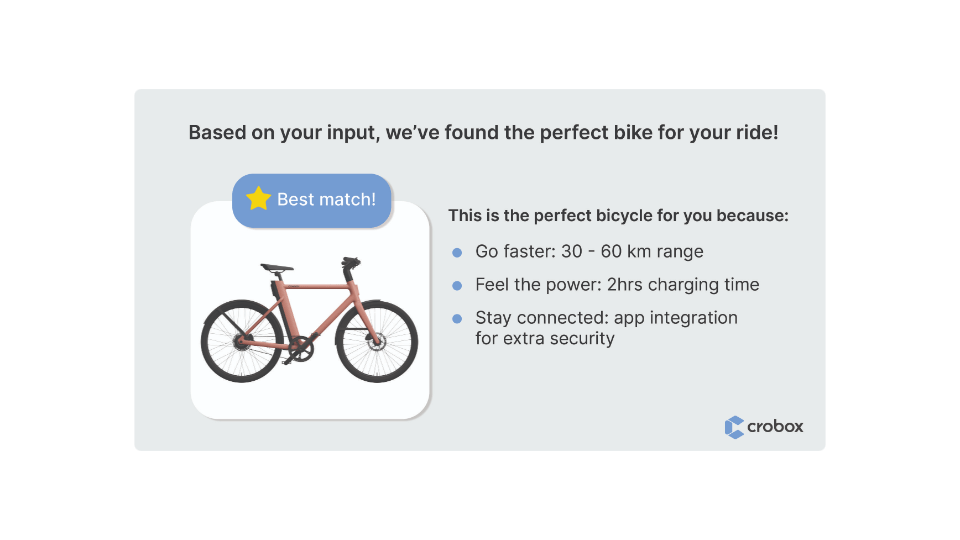
Guided selling tools are the future of high-performance digital sales – where innovation meets assistance.
Let’s indulge in some hypothesizing for a moment; retail as we know it will soon be a thing of the past. In fact, customers may forego the in-store experience altogether.
The economy is struggling, and shoppers and brands alike are feeling the impact. This is leading to purchase habits completely changing and retailers having to face new challenges in balancing their purpose against the reality of price. The differentiator has now become the experience.
The way people, places, and situations connect is going to have a big impact on revenue generation over the next few years. As a business owner, that realization could spark concern. But customers are building a preference for the online shopping groove because it offers the luxury of flexibility, time, and choice.
This shift can make it tricky to pin down where your audience fits – whether they're into the traditional in-person vibe or all about the virtual one.
If you want to safeguard your sales, adopting a principled position on future sales is the way to go. Any compelling shopping experience worth its salt will demand a killer online advice mechanism (that marries the best of your offline offering).
Rapid advancements in technology are necessitating companies to craft fresh strategies to retain their bases while simultaneously attracting new demographics. And of all the diverse strategies available today, Guided Selling tools stand apart as the most compelling of them all.
Guided selling tools are a type of eCommerce software that leverages sales expertise to help customers navigate the purchasing process and assist them in making more informed decisions. It provides personalized recommendations based on the shoppers’ needs and preferences, answers questions, and offers advice to help them choose the right product.
For example, have you ever felt like you're drowning in options while shopping for a technically complex product online? Despite that aforementioned “luxury of choice”, the sheer number of considerations and compatibility factors can make the experience downright daunting for most of us.
In-store sales assistants have been around since the dawn of retail to help guide customers through aisles, recommending products as they go. But that intimate level of guidance struggles to be naturally replicated online.
Imagine if your customers could enjoy the same level of standardized assistance online as they do in-store. Enter Guided Selling. In a world where time is of the essence, and convenience is the name of the game, Guided Selling tools aren’t merely a strategy-boosting trend – they’re the difference between a good online experience and a great one.
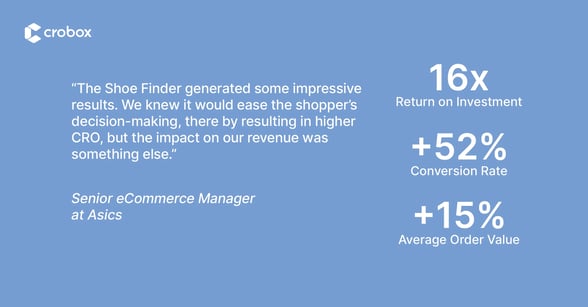
Guided selling is a multi-disciplinary strategy that analyzes current sales, historical numbers, and zero and first-party customer data. It’s particularly effective for complex or high-value products where customers may require more support.
Need more? Here’s the breakdown of why you need these tools in your tech stack:
The greatest advantage of Guided Selling tools is their ability to facilitate interactive product discovery and exploration. Through interactive Product Finders, for example, customers can engage in a guided journey to discover products that best suit their needs.
This approach not only makes the process more enjoyable and engaging but also empowers customers to have confidence in their purchases by providing them with relevant information every step of the way.
Another value-add of Guided Selling is its ability to integrate across various digital channels seamlessly.
This approach ensures a consistent and cohesive shopping experience regardless of the device or platform used by the customer. Whether browsing on a desktop computer or smartphone, customers can access the tools to receive assistance wherever they are in their shopping journey.
Guided Selling provides valuable data-driven insights for businesses. By analyzing interactions, preferences, and behaviors, retailers can gain valuable insights into their target audience and market trends.
This data-driven approach enables you to optimize customer engagement initiatives for maximum impact.
The Customer Experience is growing stale as webshops increasingly fall into the trap of templated and predictable designs.
Digital storefronts are at risk of becoming uninspiring shop windows, lacking distinctiveness beyond their branding. There’s also a heightened appetite among audiences for frictionlessness and greater personalization.
But when it comes to finding the perfect product, a desire for easier, faster product discovery is not always met: According to Gartner research, nearly half of customers (47%) desire tools and services that save them the mental hassle of researching and picking items, and over a third of shoppers (34%) would much rather spend money to save time while shopping.
Example: Imagine stepping into a vibrant store, surrounded by rows of products and bustling activity. As you wander through different sections, you enter the exploration phase, soaking in the sights and forming your initial impressions.
This phase is all about that initial self-guided journey, where you're on a mission to see what catches your eye and piques your interest.
Goal: Your goal during this phase is simple: to explore the store's offerings and form your first impressions. It's like being on a treasure hunt, seeking potential finds that align with your needs and preferences.
Example: Now, picture a friendly store assistant approaching you, ready to lend a helping hand. They engage in conversation, asking about your wants, needs, and goals.
Armed with this information, they expertly guide you through the store, pointing out products that are most relevant to you. This personalized assistance ensures that you find exactly what you're looking for, making your shopping experience smoother and more enjoyable.
Goal: In the guidance phase, it’s all about providing you with personalized advice and guidance based on your individual needs. It's like having a companion on hand, helping you navigate the aisles and make informed decisions.
Example: As the shop assistant guides you to the right products. Complementary or similar products are located conveniently next to them. These help you complete your set, or offer great alternatives to the original suggestions.
These add-on suggestions are like discovering hidden gems you didn't even know you needed. They enhance your shopping experience, offering valuable extras that elevate your purchase and leave you feeling satisfied.
Goal: During the add-on phase, the goal is to encourage exploration and selection of additional items that complement the main purchase. It's about enhancing the overall shopping experience and ensuring that customers leave feeling fulfilled and delighted with their choices.
Equipped with the information that’s been provided so far, do you see how the physical store can be replaced with a webshop, the in-store assistant can be swopped out with a guided selling tool, and how the in-store experience manages to be replicated online as a result?
Merchants have access to a wide array of tools to create highly effective guided journeys that boost the likelihood of closing the digital sale – for instance:
The more robust options, however, enhance Product Discovery by connecting your products to your customers’ needs, speaking in a language they understand:
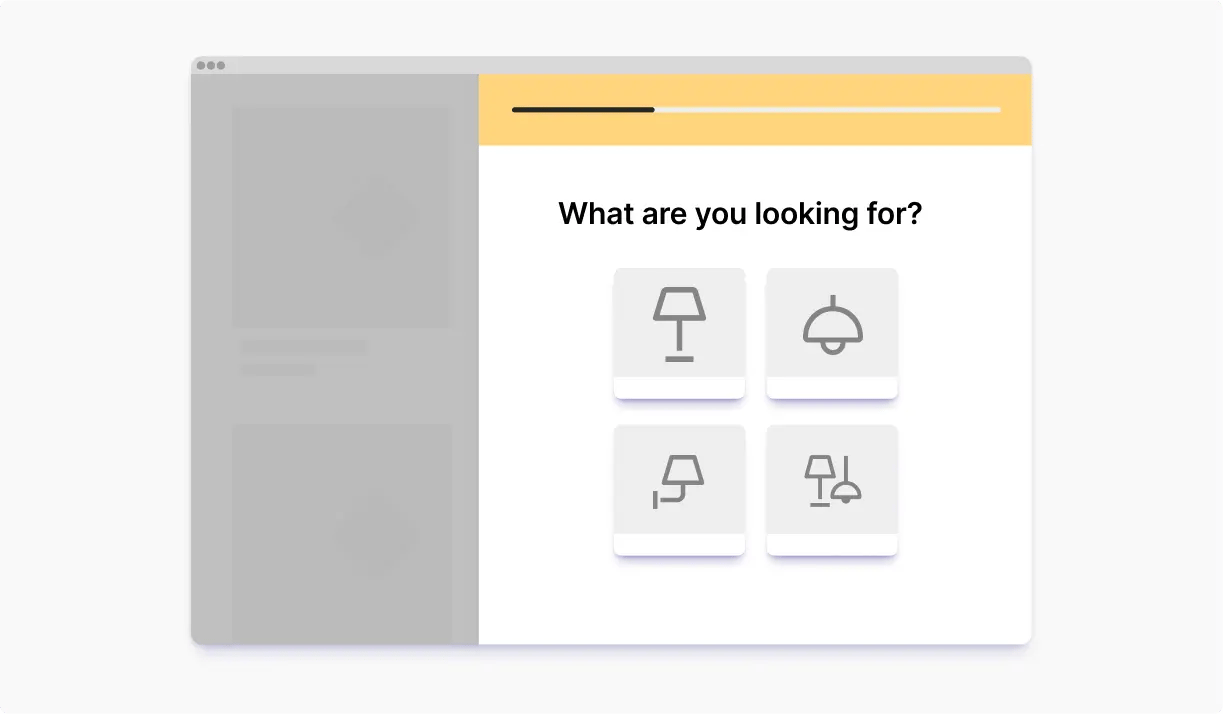
Product Finders are one way to match customers to the right products for them and educate users, all while learning about what drives their behavior.
Today’s most successful eCommerce players leverage this personalization tool to promote customer engagement. In particular, Product Finders work exceptionally well with complex or technical assortments.
According to a recent survey, 59% of online shoppers claim that personalized interactions play a key role in their decision to purchase.
We've built Product Finder tools for industries across product categories. How do we do it? It's simple: Build with technology, optimize with psychology, and keep testing to ensure the right path is tailored for each user.
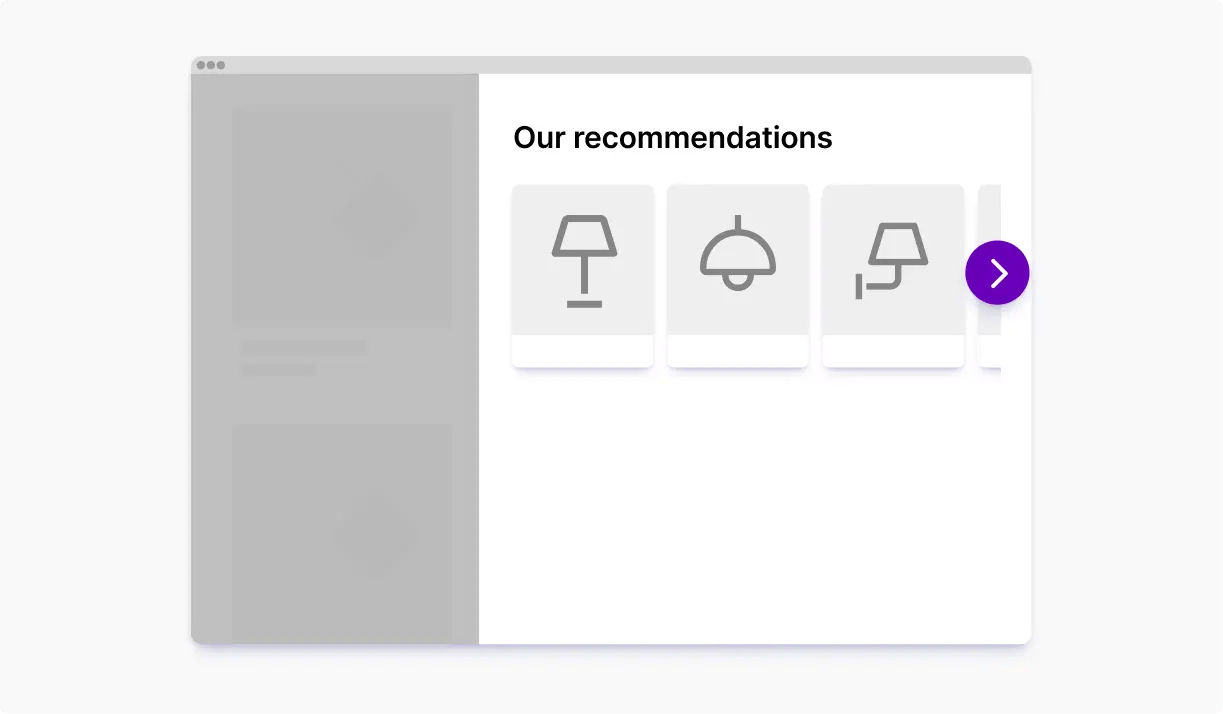
Due to their track record for improving conversion rates and sales, product recommendations are one of the more popular parts of a Guided Selling experience. And they can be very lucrative: Almost 60% of businesses see an increase in retention and conversions thanks to recommendation strategies.
Offering recommendations can also improve the average order value (AOV) of what’s in a person’s shopping cart. If a retailer can use cross-sells, for instance, to generate customer interest and ship a bunch of items instead of just one, their profit margins improve.
Regardless of the motivation to use this, eCommerce sites that deploy recommendation tech can drive sales by suggesting:
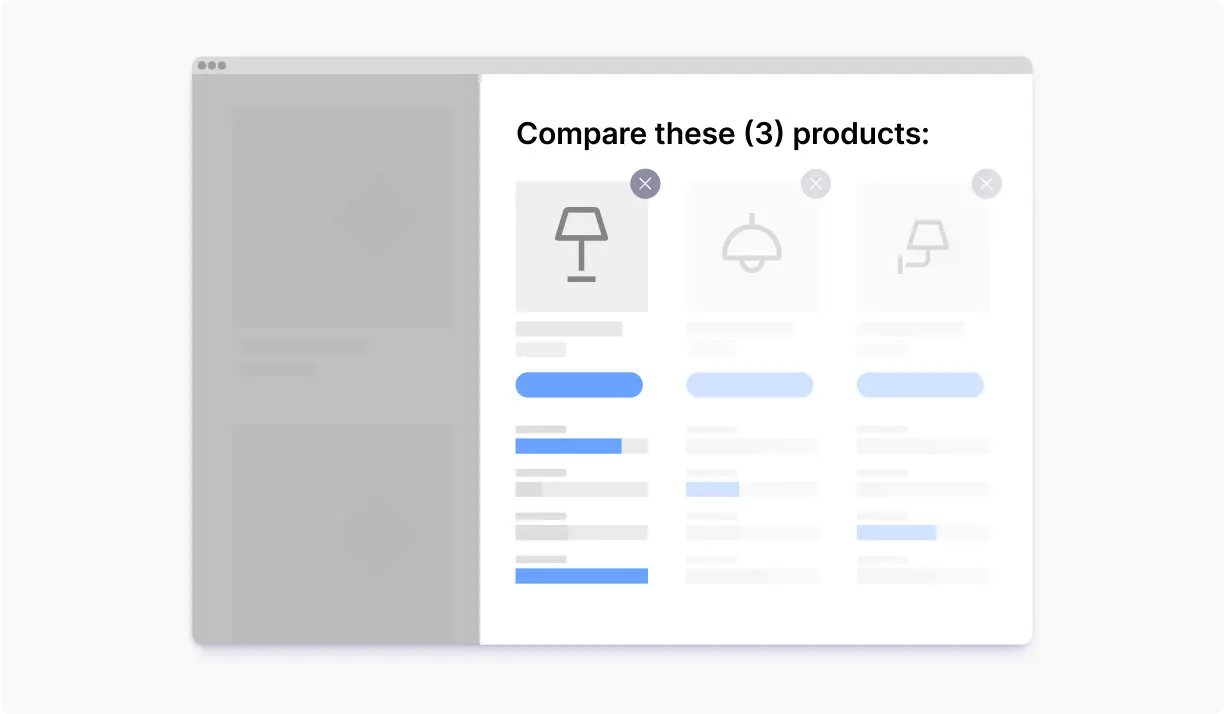
Product comparisons work by directly measuring two or more similar products, often of the same type or in the same category.
They include the major product features so potential customers know what they’ll get before buying a new product. Many also include similar items to specific products or types of products, offering even more usability.
By informing decision-making and highlighting differences between your products, you can save customers time and effort by streamlining the product research process and increasing conversions.
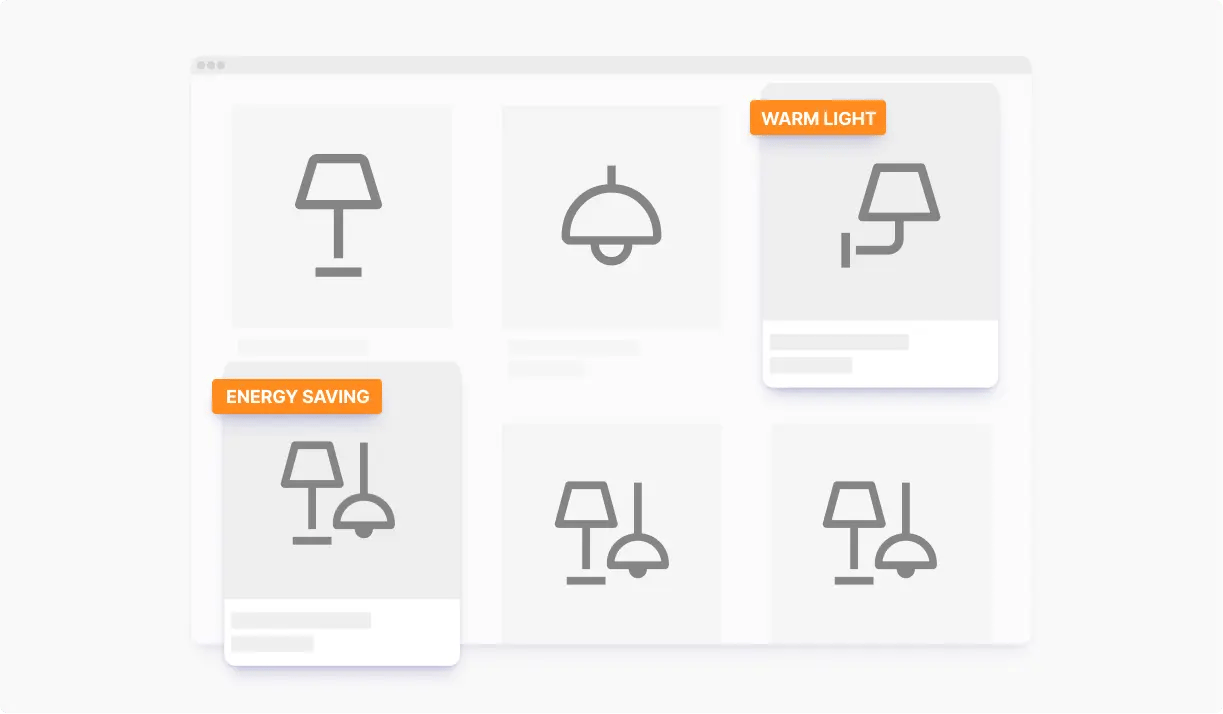
Product badges are an essential tool in any eCommerce strategy toolbox. You can use product badging to make more sales from existing customers and tap into powerful psychological triggers such as scarcity, social proof, and urgency to boost sales.
By promoting product benefits based on customer goals, you can leverage badging to capture your shoppers’ attention and drive click-through rates by making the right product stand out.
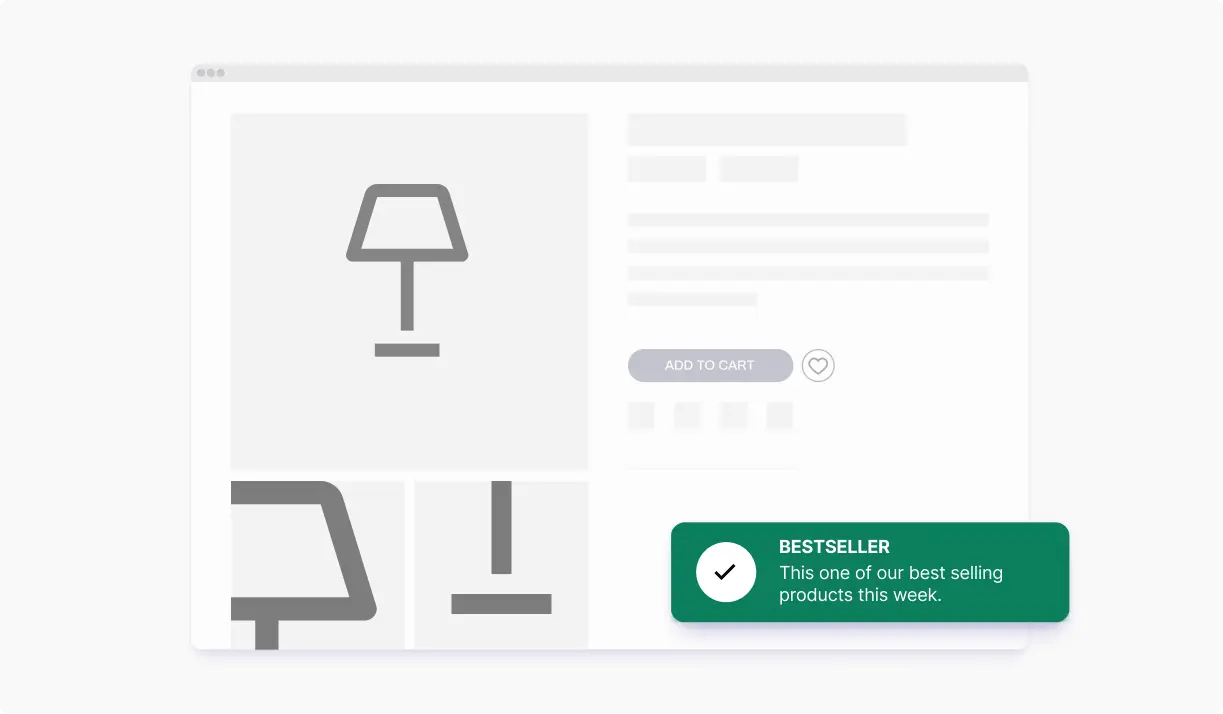
Product notifications are pop-ups or embedded messages that leverage lengthier copy to drive purchase behavior. These messages are curated to be highly persuasive or informative and appeal to the information-driven stage of the buyer’s journey.
When customers are browsing for a product, they are at the stage where their decision-making mind could use a little extra convincing.
These eCommerce product notifications:
It’s clear Guided Selling tools run the gamut in terms of impact. Here are some of the finest examples we’ve discussed above:
/koffievoordeel-finder-01.webp?width=2880&height=1336&name=koffievoordeel-finder-01.webp)
Powered by Crobox
Koffievoordeel leverages a Coffee Finder to help users find their perfect coffee match quickly and easily.
Buying the right coffee can be difficult! If you’re passionate enough, the diversity in options can be debilitating. By focusing on the factors that drive purchase behavior most, Koffievoordeel can provide a Guided Selling experience that percolates with perfection, brewing up a customized coffee journey for every customer!
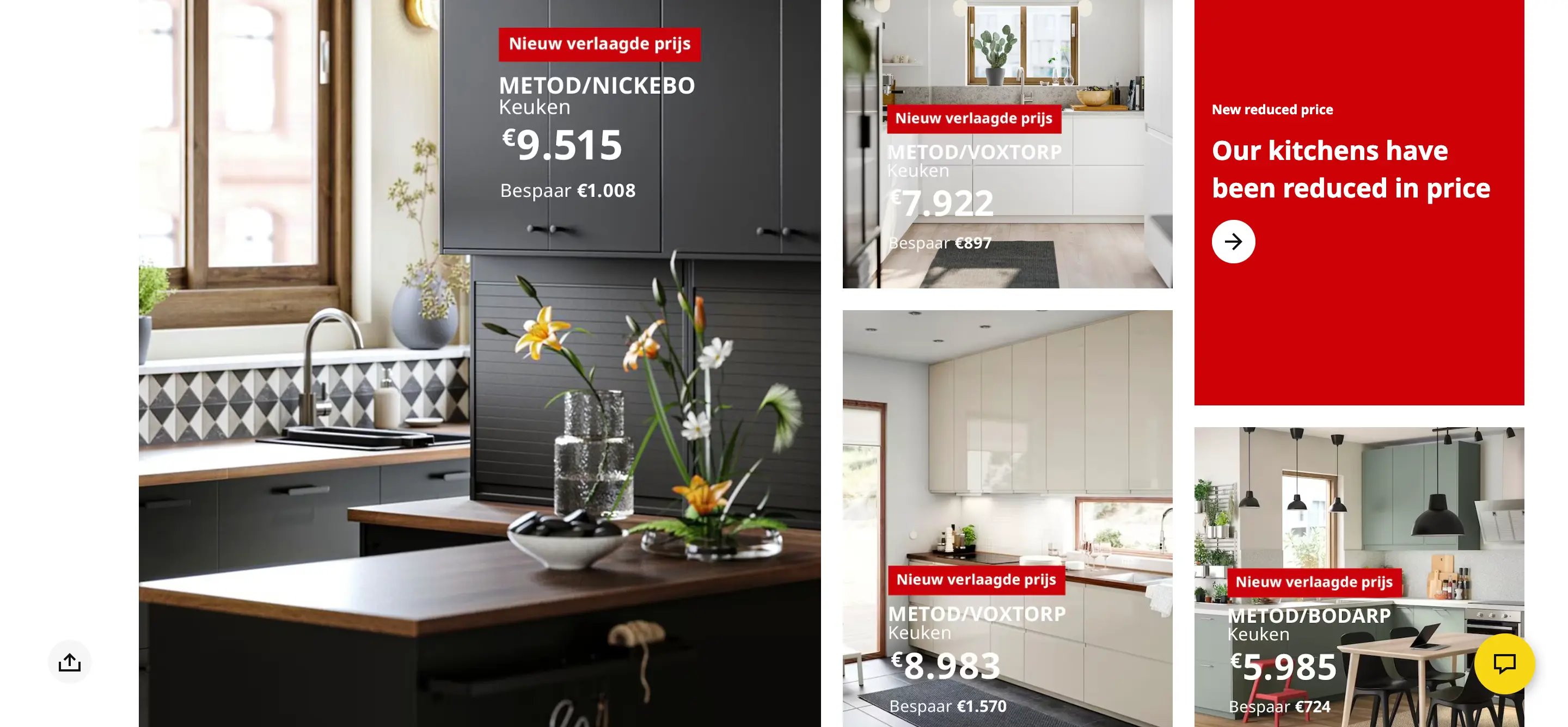
IKEA stands out with how they recommend products on collection pages. Visualizing how products fit into a home setting is key to sealing the deal. That's why it's so impressive that instead of just showing a list of products, customers also get access to themed recommendations showcasing top products in real-life scenarios. These images are interactive too, allowing users to click straight through to the product page.
Once on the product pages, customers are greeted with a variety of recommendations, like frequently bought-together items, related products, and complementary pieces.
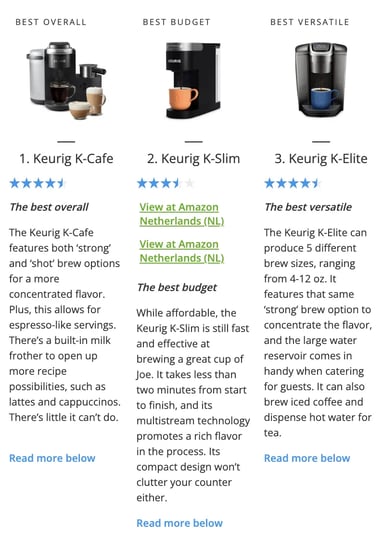
Keurig’s coffee maker product pages include a product comparison chart. No guesswork is required.
Typically, comparison tools of this nature require shoppers to select the items they want to see side-by-side, usually by checking boxes. But a better option could be to eliminate that extra step and offer pre-populated comparison charts based on the most popular products or expert recommendations.
Keurig auto-populates a three-product comparison chart on each page of its coffee makers. Shoppers can select other brewers to compare using simple pull-down menus.
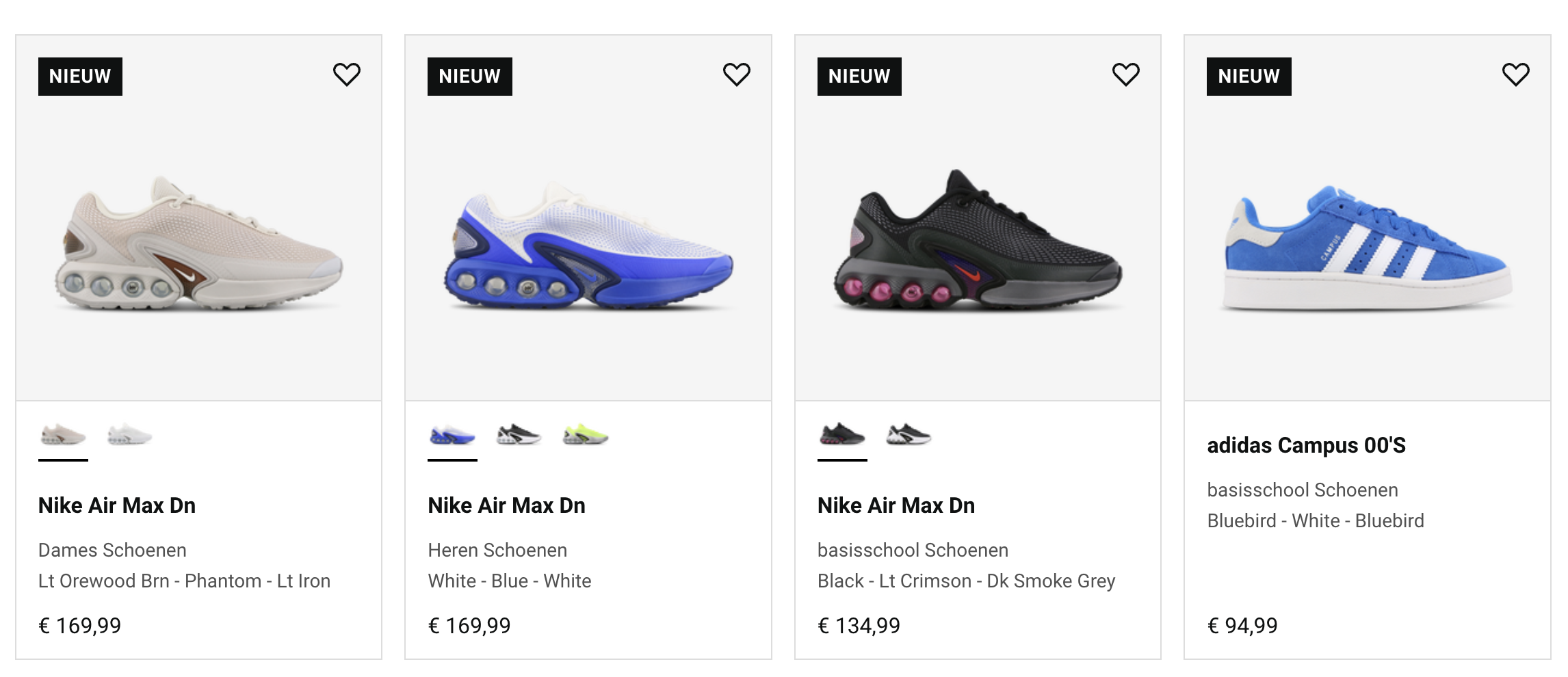
Powered by Crobox
Products that are new in supply sell well thanks to the trendiness factor. Athleisure brand Foot Locker, for instance, invests a lot in showing off new products by relying on product badges.
Badges also helps businesses showcase what products are “Best Seller”, “Top Rated” or “Customers’ Choice”, and make it easier for customers to make buying decisions.
Mega brand Ray-Ban makes push notification campaigns look easy. This is an easy tactic to tackle high cart abandonment. The headline is immediately interesting and the notification message is also perfect. Nicely done, Ray-Ban!
To address customers’ desire for unique discovery experiences and on-demand convenience, retailers must be positioned to deliver new forms of value. That requires new ways of thinking about how the store is designed to connect with its base. And without a proper personalization partner, brands can misplace the power of proactive assistance.